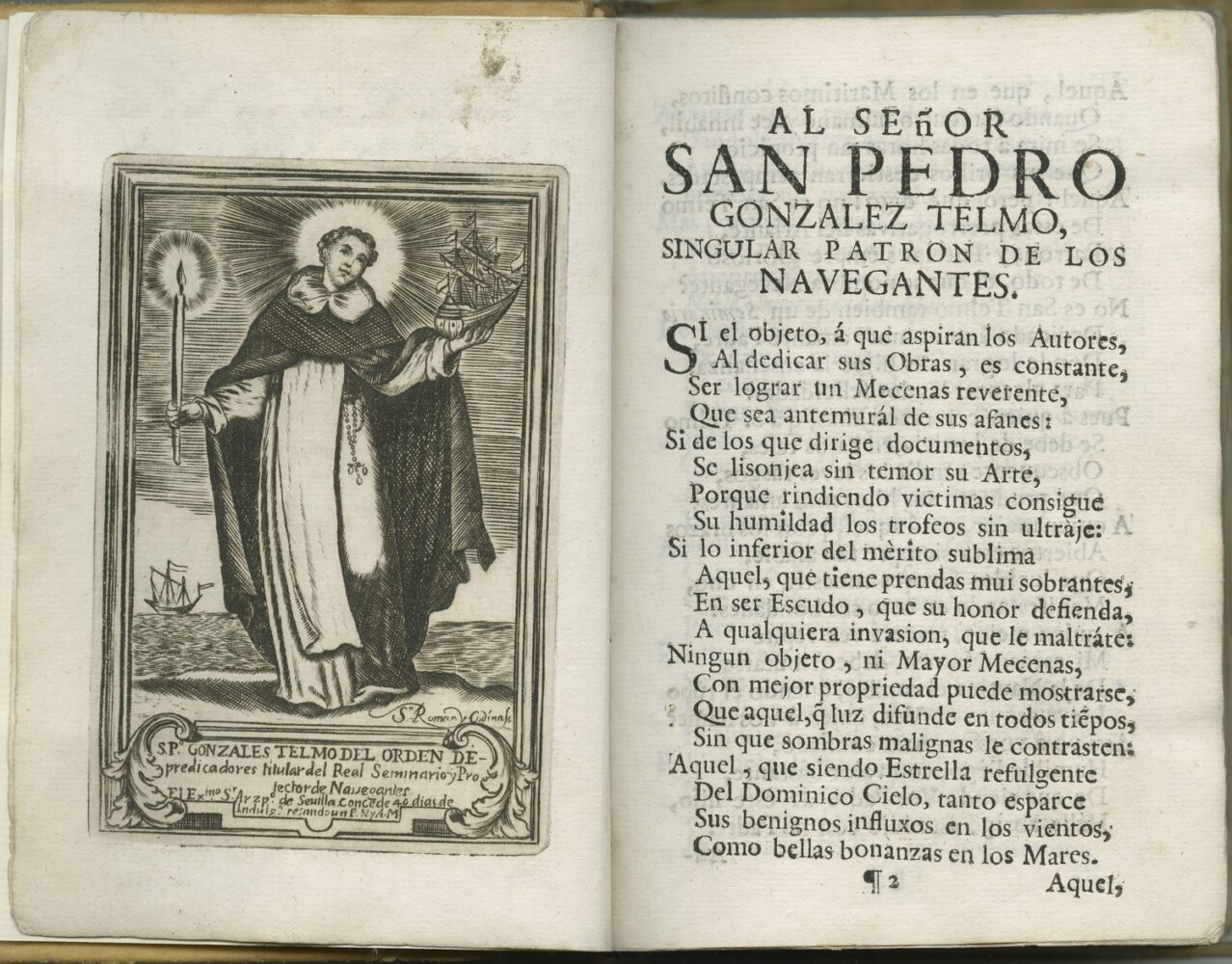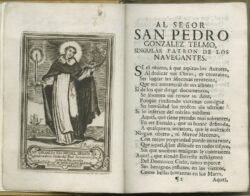Nueva Orleans
A closer look at the city’s Spanish history
Published: August 29, 2022
Last Updated: November 29, 2022

The Historic New Orleans Collection
Detail from The Sailor Educated in the Art of Navigation: Speculative and Practical, According to the Method, As Taught to the Students of the Royal Seminary of Sr. San Telmo, Outside the City Walls of Seville by D. Francisco de Barreda, Seville, 1766. / Detalle de El marinero instruido en el arte de navegacion: speculativo, y practico, segun el mètodo, con que se enseña à los colegiales del Real Seminario de Sr. San Telmo, extra muros de la ciudad de Sevilla por D. Francisco de Barreda, Sevilla, 1766.
The Historic New Orleans Collection’s latest exhibition, Spanish New Orleans and the Caribbean (on view at 520 Royal Street in the French Quarter from October 20, 2022, to January 22, 2023), upends narratives about New Orleans as a French—and only French—city, illuminating the far-reaching legacy of Spain’s brief dominion over Louisiana. The exhibition uses maps, archival documents, architectural plans, and royal decrees to shed light on how Spanish governors like Antonio de Ulloa, Bernardo de Gálvez, Esteban Miró, and even “Bloody” Alejandro O’Reilly implemented administrative reforms that established order, allowed for economic growth, and helped the city persevere through natural disasters, diplomatic tensions, and demographic transformation. By the end of the four-decade Spanish period, New Orleans had morphed from a poorly managed outpost on the edge of an empire to a diverse and thriving colonial capital—and, like Havana, Mexico City, Santo Domingo, and Veracruz, an urban exemplar of the Spanish Enlightenment.
The exhibition’s focus on the underexamined Spanish period also brings to light the history of other underrecognized and uncelebrated groups. Furniture, instruments, and other everyday items not only evince the influence of Spanish customs on existing French traditions, but also show how Indigenous and African cultural legacies shaped the city’s material culture. Bills of sale, legal codes, and other archival documents speak to the history of both Native American and African slavery. Plans for barracks and examples of military uniforms highlight the role Black soldiers and infantrymen played in the establishment and maintenance of Spanish power throughout the Americas.
Fully bilingual and showcasing artifacts from collections and institutions across the Americas and Europe, Spanish New Orleans and the Caribbean not only highlights the shared cultural patrimony and multifaceted diversity of the Spanish world and Louisiana; the exhibition embodies it.
The Historic New Orleans Collection would like to thank the 2022 Bienville Circle, Baptist Community Ministries, the Louise H. Moffett Family Foundation, and Spain Arts & Culture for their support of this exhibition.
La gran mayoría de los ciudadanos de Nueva Orleans perciben a la ciudad como indudablemente francesa. Esta perspectiva se basa en las historias dichas en las escuelas locales—y también contadas a los turistas—acerca de todo, desde la querida fleur-de-lis hasta las raíces de las peculiaridades lingüísticas regionales (decimos «making groceries» porque los franceses decían «faire son marché»).La exhibición más reciente de The Historic New Orleans Collection, La Nueva Orleans y el Caribe españoles (presentada en 520 Royal Street en el Barrio Francés del 20 de octubre de 2022 al 22 de enero de 2023) altera las narrativas que definen a Nueva Orleans como una ciudad francesa—y únicamente francesa—al iluminar el extenso legado dominio español sobre Luisiana. La exhibición usa mapas, documentos de archivo, planes arquitectónicos y decretos reales para aclarar cómo los gobernadores españoles como Antonio de Ulloa, Bernardo de Gálvez, Esteban Miró y hasta «el sanguinario» Alejandro O’Reilly implementaron reformas administrativas que establecieron el orden, permitieron el crecimiento económico y ayudaron a que la ciudad persevere ante desastres naturales, tensiones diplomáticas y una transformación demográfica. Al finalizar el período español de cuatro décadas, Nueva Orleans se había transformado de un puesto de avanzada pobremente administrado en las fronteras de un imperio a una próspera capital colonial y, como La Habana, la Ciudad de México, Santo Domingo y Veracruz, un ejemplar urbano de la Ilustración española.
El enfoque de la exhibición en el período español poco estudiado también saca a la luz la historia de otros grupos poco reconocidos y desatendidos. Muebles, instrumentos y otros artefactos cotidianos no solo evidencian la influencia de las costumbres españolas en actuales tradiciones francesas, sino también muestran como los legados indígenas y africanos moldearon la cultura material de la ciudad. Facturas, códigos jurídicos y otros documentos de archivo dan fe de la historia sobre la esclavitud de nativos americanos y africanos. Planos para cuarteles y ejemplos de uniformes militares resaltan el papel de soldados y peones de infantería negros durante el establecimiento y mantenimiento del poder español en toda América.
Completamente bilingüe y mostrando artefactos de colecciones e instituciones alrededor de América y Europa, La Nueva Orleans y el Caribe españoles no solo resalta el patrimonio cultural y la diversidad multifacética compartidos por el mundo español y Luisiana, sino que los encarna.
The Historic New Orleans Collection desea agradecer a la 2022 Bienville Circle, Baptist Community Ministries, la Louise H. Moffett Family Foundation, y Spain Arts & Culture por su apoyo a esta exposición.
